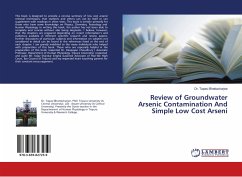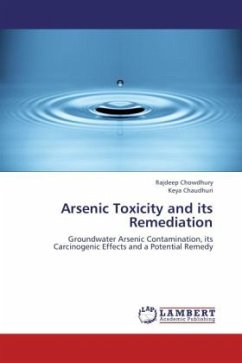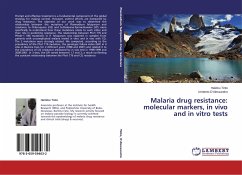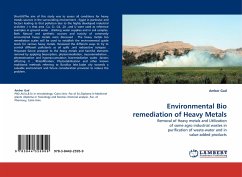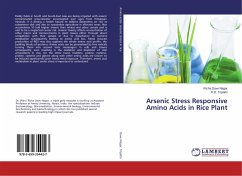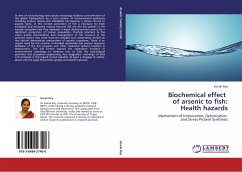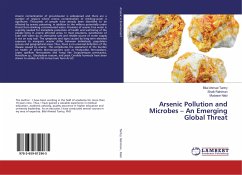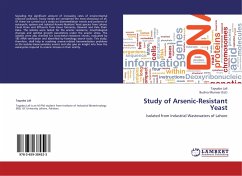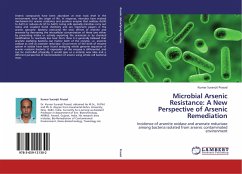
Microbial Arsenic Resistance: A New Perspective of Arsenic Remediation
Incidence of arsenite oxidase and arsenate reductase among bacteria isolated from arsenic contaminated environment
Versandkostenfrei!
Versandfertig in 6-10 Tagen
39,99 €
inkl. MwSt.

PAYBACK Punkte
20 °P sammeln!
Arsenic compounds have been abundant at near toxic level in the environment since the origin of life. In response, microbes have evolved mechanism for arsenic resistance and produce enzyme that oxidizes As(III) to As(V) or reduces As (V) to As(III). Living cells specially microbes carry out redox and covalent bond chemistry and are important players in the arsenic geocycle. Bacteria overcome the toxic effects of arsenite and arsenate by decreasing the intracellular concentration of these ions either by preventing intake or actively exporting the arsenicals or by chemical modification to reacti...
Arsenic compounds have been abundant at near toxic level in the environment since the origin of life. In response, microbes have evolved mechanism for arsenic resistance and produce enzyme that oxidizes As(III) to As(V) or reduces As (V) to As(III). Living cells specially microbes carry out redox and covalent bond chemistry and are important players in the arsenic geocycle. Bacteria overcome the toxic effects of arsenite and arsenate by decreasing the intracellular concentration of these ions either by preventing intake or actively exporting the arsenicals or by chemical modification to reactively less toxic form. Now it is generally believed that arsenite oxidizing bacteria can harbor both of the enzyme, i.e. arsenite oxidase as well as arsenate reductase. Occurrences of the both of enzyme system in isolate have been found analyzing whole genome sequence of arsenic resistant bacteria. If expression of this enzyme is differential, and can be controlled physically, it would give us a entirely new idea and a different perspective of bioremediation of arsenic using whole cell bacterial mass.



